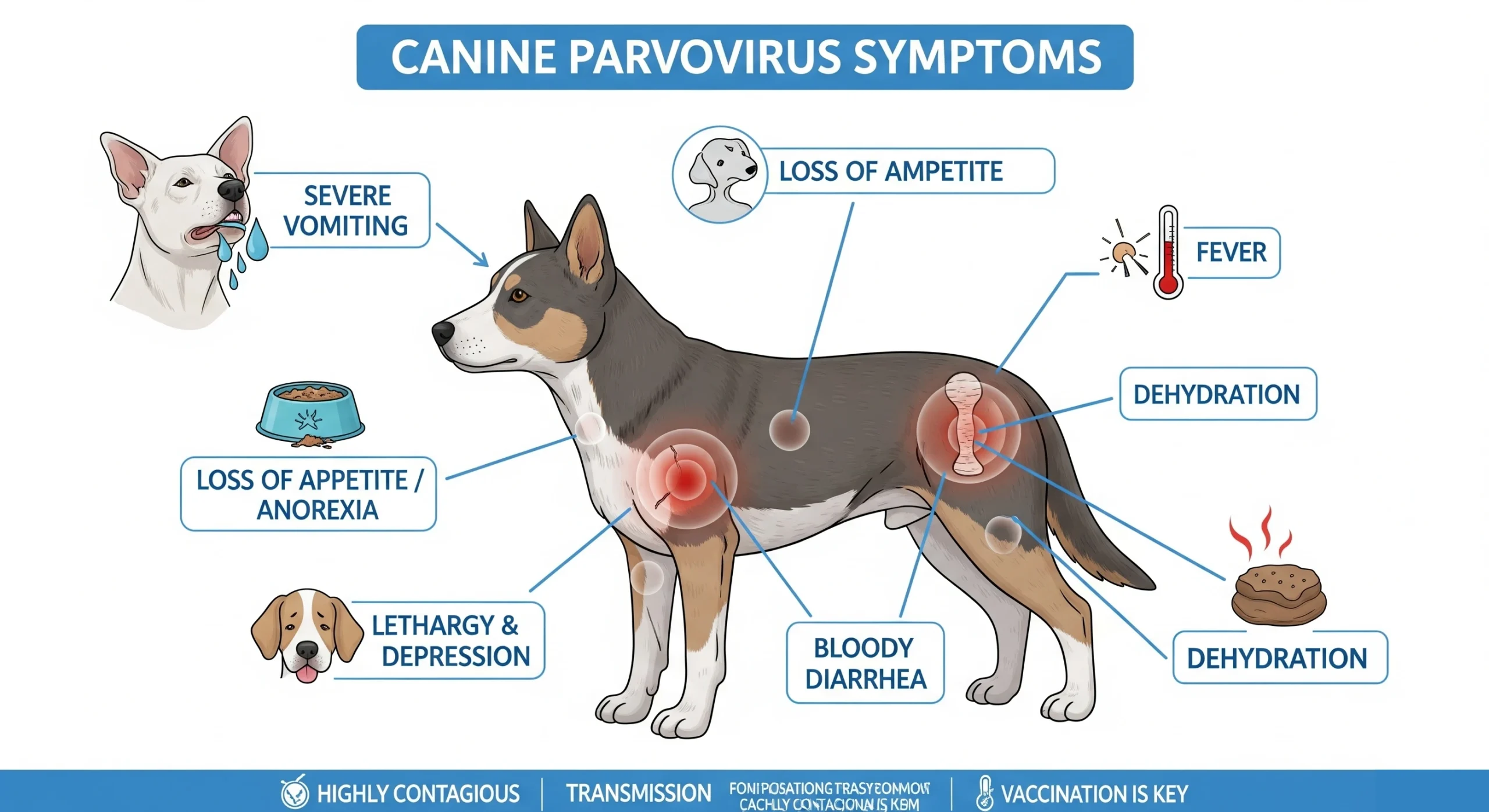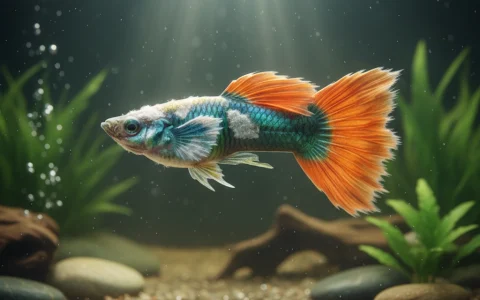🐾 Canine Parvovirus (Parvo) in Dogs: Symptoms, Treatment, and Complete Prevention

Canine Parvovirus, commonly known as Parvo, is one of the deadliest diseases affecting dogs, especially puppies under six months old. This highly contagious disease can spread rapidly if left untreated. In this article, we will cover in detail what Parvo is, its symptoms, how it spreads, as well as effective treatment and prevention methods.
📌 What is Canine Parvovirus (Parvo)?
Parvovirus is an infectious disease caused by Canine Parvovirus type 2 (CPV-2). This virus attacks the dog’s digestive system and immune system, leading to bloody diarrhea, vomiting, severe dehydration, and even death within a short period if left untreated.
Parvo is highly contagious and can survive for months in the environment, including soil, kennels, toys, or bedding.
📉 Mortality Rate of Parvo
The mortality rate can reach up to 90% if not treated quickly and properly. However, with intensive medical care, recovery rates can reach 60–85%.
👶 Which Dogs are Most at Risk?
- Puppies aged 6 weeks – 6 months
- Dogs that have not been vaccinated
- Dogs living in crowded and unhygienic environments
- Breeds such as Rottweilers, Dobermans, Pit Bulls, and German Shepherds (research-based)
⚠️ Symptoms of Parvovirus in Dogs
Symptoms usually appear 3–7 days after infection. Watch for the following signs:
- Yellow or bloody diarrhea
- Persistent vomiting
- Lethargy and inactivity
- Loss of appetite
- Fever or low body temperature
- Abdominal bloating and pain
- Dehydration (dry gums, sunken eyes)
⚠️ Immediate veterinary care is essential if your dog shows these symptoms, especially severe vomiting and bloody diarrhea.
🔬 How Parvo Attacks the Dog’s Body
The virus targets rapidly dividing cells, mainly in:
- Small intestine → causing diarrhea and digestive damage
- Bone marrow & immune system → reducing immunity
- Heart (rare) → may cause myocarditis in puppies
As a result, dogs lose the ability to absorb nutrients, suffer drastic fluid loss, and are vulnerable to secondary infections.
🔁 Transmission of Parvo
- Contact with infected dog feces
- Direct dog-to-dog contact
- Contaminated objects (bowls, leashes, kennels, human hands)
The virus is extremely resilient and can survive in the environment for 5 months to 1 year, especially in soil or uncleaned surfaces.
🧪 Diagnosis
Veterinarians diagnose Parvo using:
- ELISA rapid test (fecal sample)
- Complete blood count (to check low white blood cell count)
- PCR test (for confirmation if needed)
💉 Treatment for Canine Parvovirus
There is no specific antiviral drug for Parvo. Treatment focuses on keeping the dog alive while its immune system fights the virus. Common treatments include:
- Intravenous Fluids – to treat severe dehydration.
- Antiemetics & Antidiarrheals – to control vomiting and diarrhea.
- Antibiotics – to prevent secondary bacterial infections.
- Intravenous Vitamins & Nutrition – to support immunity.
- Strict Isolation – to prevent transmission to other dogs.
Hospitalization can last 5–10 days depending on the dog’s condition and response to therapy.
🏡 Home Care (Only Under Veterinary Guidance)
- Provide oral rehydration solutions
- Feed liquid or soft dog food (if able to swallow)
- Disinfect with bleach solution (1:30 dilution)
- Strictly isolate the infected dog
🚫 What to Avoid
- Giving human medicine
- Delaying veterinary care
- Using antibiotics without prescription
- Bathing a sick dog
✅ Prevention of Parvovirus
- Timely Vaccination – part of the DHPP vaccine schedule:
- 6–8 weeks: first dose
- 10–12 weeks: second dose
- 14–16 weeks: third dose
- Annual booster thereafter
- Maintain Clean Environment – disinfect kennels and feeding areas.
- Avoid Public Areas Before Vaccination – parks, boarding facilities.
- Keep Dirty Shoes Out – virus can stick to footwear and clothes.
🧽 Disinfecting an Infected Environment
- Use bleach solution (1:30) for hard surfaces
- Direct sunlight helps kill the virus
- Dispose of contaminated bedding, toys, and fabrics
🧠 Myths & Facts about Parvo
| Myth | Fact |
|---|---|
| Parvo only infects puppies | Adult dogs can be infected if unvaccinated |
| Dogs can recover without a vet | Very unlikely without intensive care |
| One vaccine shot is enough | Full vaccination and boosters are essential |
| Parvo only spreads through feces | It can also spread via hands, shoes, and contaminated items |
🐕 Practical Tips for Dog Owners
- Keep accurate vaccination records
- Quarantine new dogs before introducing them
- Wash hands and feet after park visits
- Monitor your dog’s behavior daily
- Keep your vet’s contact ready for emergencies
🧾 Conclusion
Canine Parvovirus is a serious threat to dogs, especially unvaccinated puppies. With vigilance, regular vaccination, and a clean environment, the risk can be minimized. If you suspect your dog has Parvo, do not wait—immediate veterinary care is the only way to save their life.

